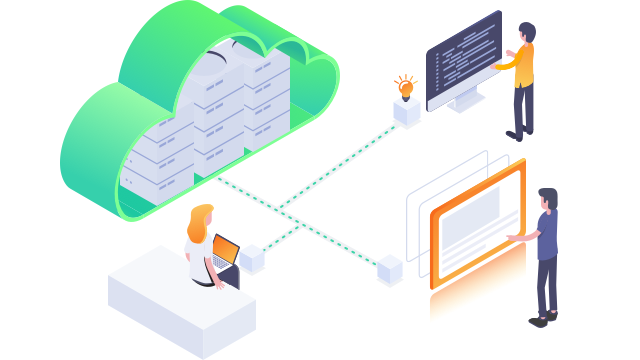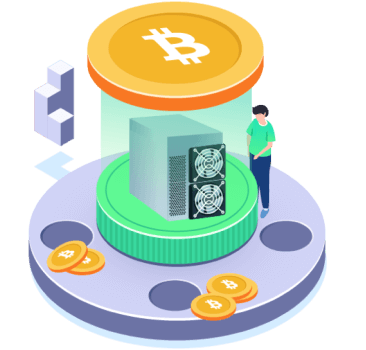AI Cloud Instance
Our cloud service makes it easy to deploy container-based GPU instances in seconds, from either public or private repositories. This means that you can get started with GPU computing quickly and easily, without having to worry about managing your own hardware.

SEALMINER
La machine de minage développée par Bitdeer s’appuie sur la série avancée de puces SEAL pour une efficacité exceptionnelle. Sa toute nouvelle architecture tire pleinement parti des puces, pour une fiabilité, une durabilité et des performances à toute épreuve, même dans des environnements difficiles.
Ressources
Parcourez notre centre de ressources pour trouver ce dont vous avez besoin. Abonnez-vous pour rester informé de nos dernières actualités, annonces et publications.
Abonnez-vous à notre bulletin d’informations

Soft Fork in Crypto Networks: Meaning and Cases
2024.11.07
What then precisely is a soft fork, and how does it differ from a hard fork? The meaning of the soft fork, its technical properties, and numerous well-known incidents that show their relevance in the development of crypto networks are clarified in this paper.
In decentralized cryptocurrency networks, protocol updates and changes are essential for development and security. While hard forks can cause fundamental chain splits, soft forks offer a gentler way to implement modifications without compromising the integrity of the blockchain. What then precisely is a soft fork, and how does it differ from a hard fork? The meaning of the soft fork, its technical properties, and numerous well-known incidents that show their relevance in the development of crypto networks are clarified in this paper.
What Is a Soft Fork in Blockchain?
A soft fork allows new and old nodes to coexist since it is a backward-compatible modification to the blockchain architecture. Under this approach, the new guidelines become more stringent but still fit for past iterations of the program. Unlike a hard fork, a soft fork does not cause the blockchain to divide into two different chains. Rather, it changes the blockchain using fresh rules limited to transactions and blocks generated following the fork.
For instance, you may picture a soft fork as a community deciding to accept only blue paper boxes going forward, but the system still detects green boxes. While the old nodes still identify green boxes, therefore contributing to the network and validating both blue and green boxes, supporters of blue boxes welcome the benefits of the new protocol.
How Does a Soft Fork Work?
The actions of a soft fork are more flexible and simple than a hard fork's. A soft fork keeps backward compatibility. Therefore, nodes that haven't updated can still identify blocks that follow the new rules, enabling a more seamless network transition free from concern for a split into two independent chains. Usually, the process consists of four phases:
- Proposal: Developers suggest changes to the existing blockchain rules, usually to enhance security, reduce transaction size, or add new features.
- Community Consensus: Similar to a hard fork, a soft fork requires agreement among network participants, including node operators, miners, and developers. However, since the changes are backward-compatible, soft forks tend to be less controversial.
- Network Activation: The community agrees on a specific block height or time to activate the new rules. Once activated, miners and nodes following the new protocol begin validating transactions under the updated rules, while old nodes continue validating blocks as usual.
- Validation and Enforcement: Blocks that don’t follow the new rules are rejected by miners using the updated protocol, ensuring that only valid transactions are added to the blockchain.
Key Examples of Soft Forks
Pay-to-Script-Hash (P2SH) is a soft fork activated on Bitcoin in 2012. By hashing a script and leveraging it as the receiving address, P2SH allows users to generate increasingly sophisticated transactions like multi signature wallets. The script would only become clear when the transaction was consumed. P2SH lets consumers establish more complex contracts by greatly boosting Bitcoin's security and versatility. Old nodes, acting as a soft fork, could still validate blocks including P2SH transactions, therefore ensuring a seamless and inclusive update.
Another well-known soft fork is the strict DER signature Bitcoin Improvement Proposal 66 (BIP66), put in place in 2015. It tightened guidelines on the Digital Signature Algorithm (DER) encoding, mandating signatures in a uniform style. Non-standard signatures can possibly cause miners to reach consensus problems before BIP66. Without calling for a split, BIP66 guaranteed Bitcoin's security and uniformity. The new guidelines disapproved of non-standard signatures while existing nodes stayed compatible to enable seamless network running.
In 2017, the Bitcoin network was soft forked again, called Segregated Witness, or SegWit. SegWit divided transaction signature data from transaction data, therefore enhancing block capacity without changing the 1MB block size limit. Because more transactions could be put into a single block, this development enabled lower fees and faster transaction processing. SegWit also lessened the early weakness of Bitcoin, transaction malleability, SegWit, acting as a soft fork, lets existing nodes keep verifying transactions on the Bitcoin network even without updating to enable SegWit.
Reasons to Choose a Soft Fork
Backward Compatibility
Soft forks are often chosen for their compatibility with old nodes, reducing the risk of network splits and maintaining community unity. This approach allows developers to introduce new features or enhance security without requiring all nodes to upgrade immediately.
Reduced Risk of Network Splits
Unlike hard forks, which may result in two competing chains, soft forks prevent splits by ensuring that old nodes can still participate in the network, helping to maintain network stability.
Improved Security and Functionality
Soft forks often improve network security by implementing stricter validation rules. For example, BIP66 reduced the impact of invalid signatures on Bitcoin’s network. Soft forks can also enhance functionality without a disruptive overhaul, like SegWit’s capacity improvements and P2SH’s extended transaction capabilities.
Smoother Transitions for Users and Miners
Because soft forks are backward-compatible, they provide a smoother experience for users and miners alike. Nodes can gradually transition to the new rules without impacting existing operations, making the upgrade process more manageable.
Soft Fork vs. Hard Fork: Pros and Cons
The table below amply shows the variations between soft and hard forks, illustrating their distinct characteristics in terms of compatibility, risk, flexibility, community impact, and use cases. For more detailed information on hard forks, see ‘Hard Fork in Crypto: What Is It?’

All things considered, soft forks provide a means for blockchain systems to grow and flourish free from influencing community cohesion. Soft forks support stability and slow improvement by adding fresh features and improving security in a backward-compatible manner. Soft forks are a useful tool for network updates even if they might not fit significant structural changes since they allow constant evolution while maintaining members in line.
Learn More at Bitdeer
Whether you’re an expert in blockchain technology or a newcomer to cryptocurrency, Bitdeer’s Learning Center provides in-depth articles to expand your knowledge. As a leading one-stop Bitcoin service provider, Bitdeer ensures that your investments are secure and efficient, with sustainability at its core. Visit Bitdeer to discover how you can maximize your crypto potential.
*Information provided in this article is for general information and reference only and does not constitute nor is intended to be construed as any advertisement, professional advice, offer, solicitation, or recommendation to deal in any product. No guarantee, representation, warranty or undertaking, express or implied, is made as to the fairness, accuracy, timeliness, completeness or correctness of any information, or the future returns, performance or outcome of any product. Bitdeer expressly excludes any and all liability (to the extent permitted by applicable law) in respect of the information provided in this article, and in no event shall Bitdeer be liable to any person for any losses incurred or damages suffered as a result of any reliance on any information in this article.








